Multi-fractional Lavender Herbal Oil Recipe

Let me introduce you to one of the most decadent, delicious herbal remedies I know: Lavender herbal Oil.
Perhaps you already love this remedy, too. Then you know how a little Lavender herbal oil massage soothes the nervous system like no other.
If you haven’t made your own Lavender herbal oil, I cannot recommend it enough.
Lavender herbal oil smells delicious, it’s true. But herbal oil are not just effective because of their smells.
Anything we apply to our skin is absorbed by the dermis and makes contact with the immune and nervous system very quickly (this is one of the reasons I love herbal foot baths so much, too). The skin is partially made up of phagocytes, a white blood cell and part of the immune system, and they are tasting everything they come in contact with.
I am most definitely a minimalist when it comes to the herbal remedies I use. For daily use, I love Hypericum oil in the morning, I love Lavender oil at night, and I love botanical facial toner with Queen of Hungary Water (which I wrote about in the previous entry). There are other herbal things I use, like occasional herbal teas and my non-negotiable three-times daily Lyme protocol. But those two oils and the toner are my favorite.
If you have used Lavender herbal oil, then you know why. It is such a soothing, sensually calming remedy.
If you’ve never made it but want to, I cannot recommend it enough. I hope you find this recipe as easy and enjoyable as I do.
Lavender Herbal oil vs Essential Oil
I’m NOT talking about lavender essential oil in a carrier oil.
I’m talking about steeping Lavender herb in an oil. Creating an herbal Lavender oil.
There are many ways to make herbal oils. You can make them from dried herbs or fresh, or from freshly dried or wilted herbs (my favorite way).
You can make them in a double boiler (pleeeeease keep it very low temp otherwise you’ll cook the oil and it will be unusable). And, you can make them as a solar extraction, which is what this post is about.
Please refer to James Green’s The Herbal Medicine-Maker’s Handbook for full instructions as to all the different ways to make herbal oils.
Multi-fractional extracts for full-bodied medicine
I first heard the term “multi-fractional extracts” from Sam Coffman of Herbal Medics at a conference I attended in 2019.
Multi-fractional extracts are about getting a wider range of constituents by combining extraction solvents in one medicine. This process works really well for herbs that are polysaccharide rich, like echinacea, for example. First you would make a tea, then make that tea into a tincture, so you get the water-favorable and alcohol-favorable aspects of the herb in one extract.
I am kind of doing this right now with a spiced Rose and roots elixir. I made a strong decoction of Shatavri, Schiandra, White Peony and spices, then mixed that with dried Roses and Hawthorn Flowers, and added alcohol and honey. In the future I’ll post about it.
Please check out Coffman’s website and classes – he is doing some really neat herbalism! I have a passion for treating* infections with herbs, which is something he talks a lot about.
* In case you are wondering about me saying this, I am an LAc and can legally say “treat” and “diagnose” within a holistic, Chinese medicine framework. Before getting my license when I was only working as a Western herbalism, I would say things like “support” or “assist”.
This is also called an alcohol-intermediary process of making herbal oils.
Michael Moore taught this method, as many did before him and as other herbalists still do today (Wintergreen Botanicals has a nice post about it). I have done this in the past and like it, but because I am not up on my kitchen game from having Lyme and low energy, I do not like putting my herbs in the blender if I don’t have to. The least time I can spend straining things through cheesecloth and cleaning the blender, the better. (That being said, I have a milky oats tincture that reeeeeeealy needs to go into the blender – send me some motivation.)
I am somewhere in the lazy, easy peasy middle when it comes to multi-fractional extracts of herbal oil.
How I make herbal oils is really quite simple: mix a small enough amount of alcohol into an herb so that there isn’t any alcohol to pool at the bottom of the jar, but yet the herb is fully and equally saturated by the alcohol.
If there is a lot of alcohol at the bottom, I wouldn’t worry about it. A little extra steeping time would let it evaporate.
Is there a problem if there is a lot of alcohol in the herbal oil? I don’t think so. What do you think??
I’m wondering if this qualifies as a multi-fractional extract because it’s such a small about of alcohol. I do not notice it at all in the final product.
This process reminds me a little of making liniments, even though liniments are not typically oily at all. It’s just herbs mixed in alcohol that are applied topically. I however mix alcohol and oil for liniments – I just have to shake it well.
More so than making an oil and alcohol mixture, I often mix an oil and an alcohol based extract directly on my skin. First I apply an herbal oil to an area of my body, say my aching shoulder. Then I follow it with a tincture that I use as a liniment, or a liniment designed to be a liniment.
All this is to say, I like mixing alcohol herbal extracts and oil herbal extracts together in any way I can. Even if it is not a proper alcohol intermediary process or a multi-fractional extract.
Before I get into the how-to, I want to share how our yard became graced with the healing presence of the spectacular being that is Lavender in the first place.

Lavender Dreams
I’m not talking about Lavender inducing dreams, or Lavender figuratively putting me to sleep, though that sounds lovely – and is very within the medicine of Lavender.
I’m also not talking about dreaming about Lavender.
A few months ago, I had a vision of Lavender during a workshop with Rachel from Essense of the Mother. I can’t recall the specific prompt, but we were led into a reflection of what we truly desired.
I asked myself that question, What is it that I want?
Such a powerful question – broad and specific at the same time.
Upon asking that, I saw a corner of my tiny yard turned into a garden bed, with Lavender as the centerpoint. The Lavender sprawled over the rock edge towards the sidewalk. The concrete was carpeted with fragrant fallen Lavender flowers, and my kids were reveling in playing with them.
Then I saw an image of Lavender with a dark greyish background. Almost like a Lavender spike put on black paper or a chalkboard, except it was from the natural lighting of evening time on an overcast day.
That image of Lavender has been with me for many months.
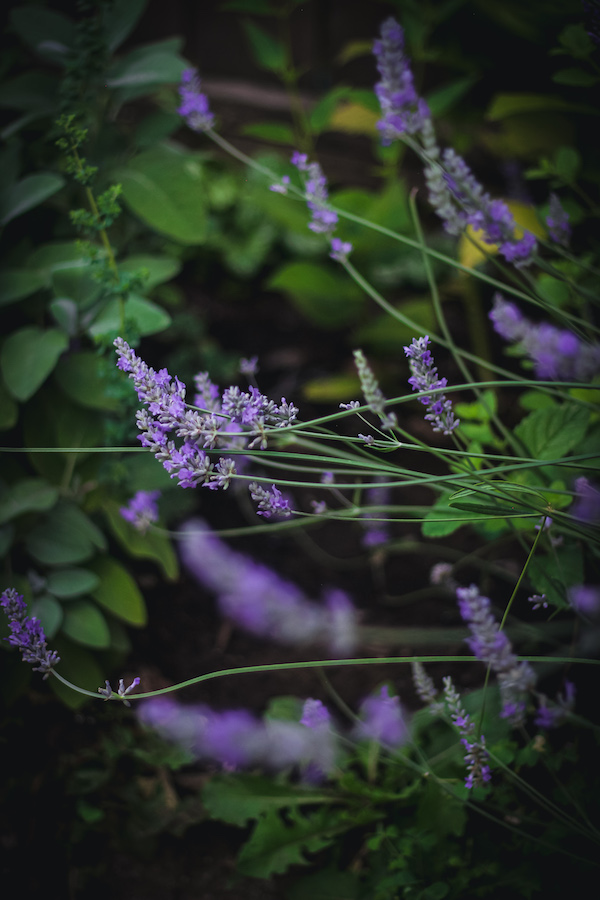
A few days ago while editing these photos, I saw this photo above and realized this was an image from my vision. It took me by surprise. The future has arrived, with Lavender!
I have wanted a Lavender in my own garden for a long time. The kids and I love to meet them walking through our Northeast Portland neighborhood. Especially in mid and late summer when they are full of honeybees and bumblebees, and when they are shedding spent flowers onto the sidewalk.
When Wolfie was 3 and 4 he said both he and a particular Lavender plant up the street shared the same name, “Lav Bud”. I am not sure if the “bud” part refers to them being buddies or a flower bud – or both? Wolfie would walk up to that plant and become one with Lav Bud.
Both kids can play around a Lavender for the good part of an afternoon, as can I.
For a long time I’ve wanted to provide a spilling-over-the-sidewalk Lavender to my family and passerbys.
Thanks to the Covid stimulus, in April I bought some solid rocks to make a tiny retaining wall for the southeast corner of our yard. And Lavender was planted!
The dream of planting a Lavender in a specific location was truly a big goal of mine. Sometimes it feels like a garden is all I ever wanted, and gardening is all I ever want to do.
I realized that this has all come full circle, having seen this Lavender corner come to life, I wondered, well, what do I do now?
I’m not sure what prompted me to ask that question. But it seemed pertinent, since I had a vision of this moment.
Now that it’s here, I wonder what it all means.
When we arrived at a destination, now what we do?
After asking that question to myself, I had the best instructions arrive. Oh, it’s so good. This is why I love intuition sometimes.
The instructions were…to celebrate
Celebrate Lavender and celebrate my garden and house and family and summer. But mostly, celebrate the nurturing of the dreams of welcoming this plant into our space and life.
You did it. It seems like a little dream but it is as good as any.
This led to another question, from a more practical part of myself. Maybe you’re asking it too: how exactly do I celebrate this Lavender and the creation of a garden? Crack open a bottle of champagne on the sidewalk and give a toast?
That doesn’t sound half bad. My neighbors already know I’m a little out there.
The hit I got was not as fancy as champagne but just as fun (at least to a gardener): Go out and weed the garden bed and while I do so, celebrate!
Dreams take continual care and nurturing. Lavender is a super tough Mediterranean plant. It doesn’t need much. It doesn’t even need water!
I think it wants me to show up for the continual work it takes to maintain and grow a garden, so the plants can continue to thrive and give to their fullest too.
After a long day of weeding, I can do some self massage with the beyond lovely medicine that is Lavender Herbal oil.
Here’s the basic recipe for homemade Lavender herbal oil.
How to make a Multi-fractional extracted Lavender Herbal Oil
- Fill a jar about halfway with wilted, freshly dried or dried lavender
- Pour a small amount of alcohol, grain or 40 proof like brandy or vodka into the jar and mix thoroughly with a spoon to fully saturate the herb. I use about 2 tablespoons alcohol for a half filled quart jar and about one tablespoon for a half filled pint jar.
- Let the alcohol-mixed lavender sit for a couple of hours.
- Pour your favorite carrier oil into the jar. Make sure there is about 2 inches of “head space” in your jar. This means there is about 2 inches of oil above the level of the herbs. Often the oil will not be directly on top of the herbs but under or in between the herbs. Wherever it is, try to make it be 2 inches. You will probably have to add more oil a day or two later as the herbs absorb it through the steeping process.
- Cover. Shake well! Let sit in the sun for a minimum of 6-8 weeks.
- Wilted or freshly dried herbs will be less likely to cause moisture to build up in the jar and cause mold. But it is still possible. Check inside the jar frequently for moisture. Wipe out with a clean, dry cloth if you see it.
- Strain through a colander or strainer, the strain again through cheesecloth.
- Label your newly strained oil and store in dark jars. Keep them in the fridge to extend their life, if desired.
- Use liberally, daily. Massage into your entire body, or just your earlobes. Use however you please and feel the Lavender sweet calmness buzz through your skin to become a balm for your nervous system.
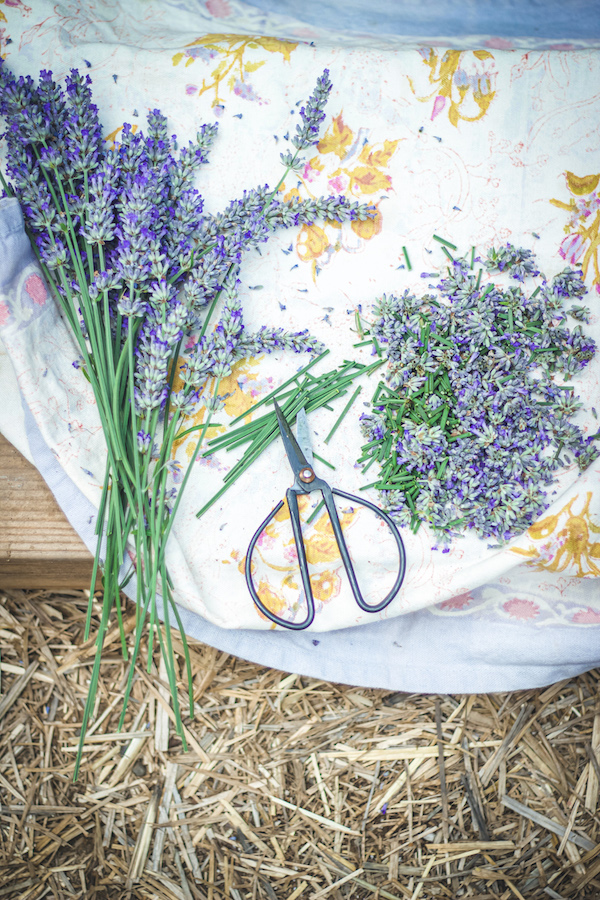
Dried, fresh, wilted, or freshly dried Lavender?
Which to use? Use whatever you can, whatever you have. The dried Lavender from herbal commerce is just fine. Freshly dried or wilted Lavender is nice and preferable if you have access to them.
Wilting fresh herbs. If you have access to fresh herbs, I recommend cutting them to about 1/4 inch long and letting them wilt for 6-24 hours while laid out on a towel.
Wilting allows the excess moisture to evaporate. You can see how much space the same amount of Lavender takes after it’s been wilted in the pictures below.
The slightly less watery herbs extracts a more fully because there is less water that ends up in the mixture. Fresh herbs contain quite a bit of moisture, even if they don’t feel wet to the touch. You can see in the photos of the herbs in the jar how much condensation had already occurred in about 20 minutes.

Fresh Lavender after being cut 
Wilted lavender, the next day
The Skin as a Medicine Delivery Route for Herbal Oils
The skin absorbs herbs so well. Fragrant herbs are easy to track this way because we can easily taste and smell their aromatic nature.
Have you ever done a Garlic foot bath?? After a few minutes the Garlic breath comes on strong, and you can feel the acrid warmth working deep in the lungs. This happens with all sorts of herbs and constituents, however, not just the aromatic ones we can taste and smell.
I like using homegrown Lavender because I can use the stalks too, which are as fragrant as the blossoms in a slightly different, sharper way. When I hold Lavender by the stalks, I start to feel Lavender in my lungs and taste it in my mouth. Then a moment later, I feel a suuuuuper relaxed zen-like feeling that centers on my head.
A friend came over and prepped a batch of Lavender oil. She too attested to the calm, relaxed, not-a-care-in-the-world sensation that comes from simply handling this plant.
It’s not surprising. Lavender may be the quintessential calming fragrant herb. It is certainly popular around the world for this very reason.
Lavender: Skin Calming, Nerve Calming
The body is an integrated unit. We can’t separate where the functions of one system ends and another begins. They all feed back on each other.
The skin is a sense organ of the nervous system, a connective tissue organ and an immune organ. It has afferent nerve tissue which sends sensory information to the central nervous system. It is partly because of its connection to the nervous system and immunity that skin helps to maintain homeostasis.
Massaging herbal oil into the skin is a way to feed and nourish the nervous system. Using pressure and heat increases the rate of absorption of constituents through the skin and thus delivers the medicine more thoroughly.
That reminds me…Lavender herbal oil is a wonderful bath oil. Like I said above, I’m kind of lazy – aka still in the process of recovering my energy – so I am not into scrubbing oil rings out of my bathtub. But it you don’t mind the extra cleaning, it is well worth the effort.

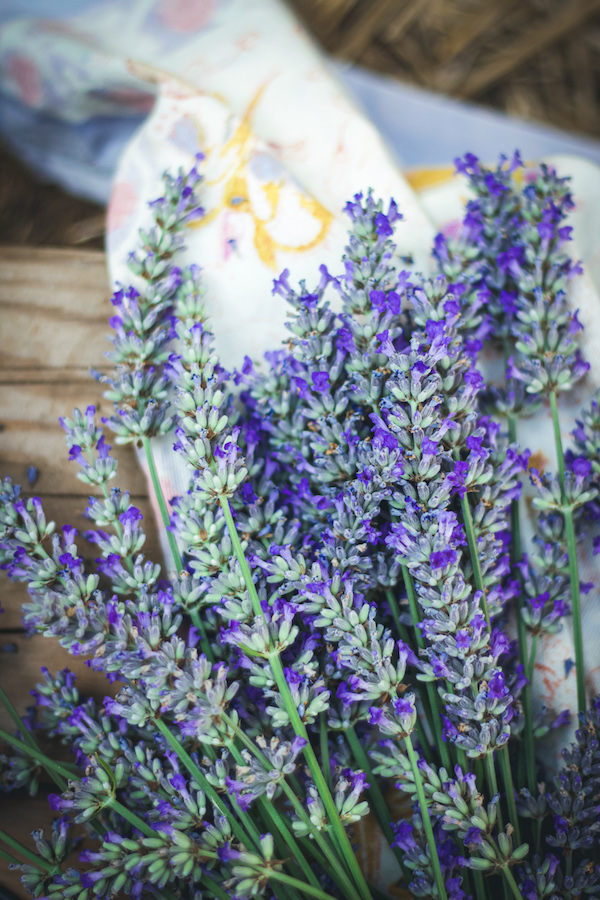
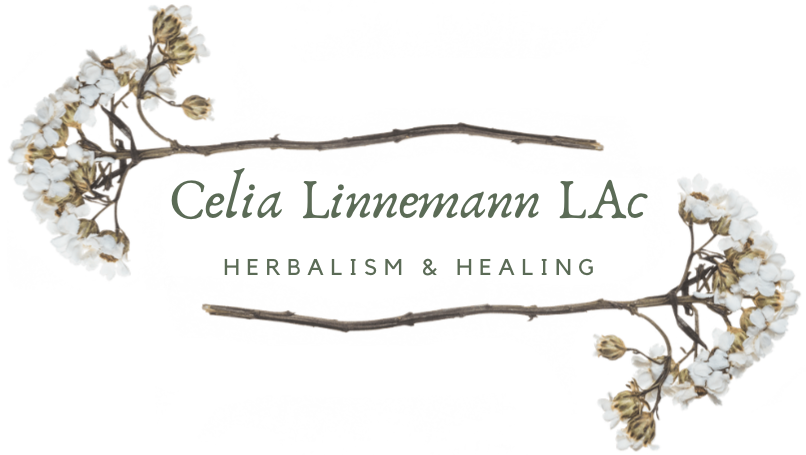

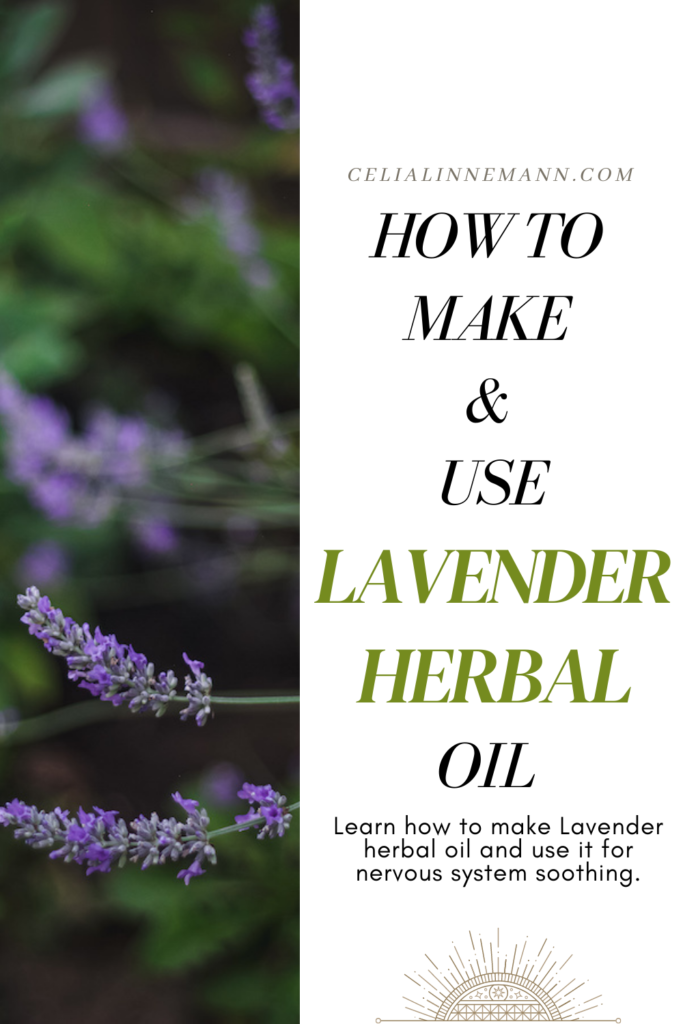




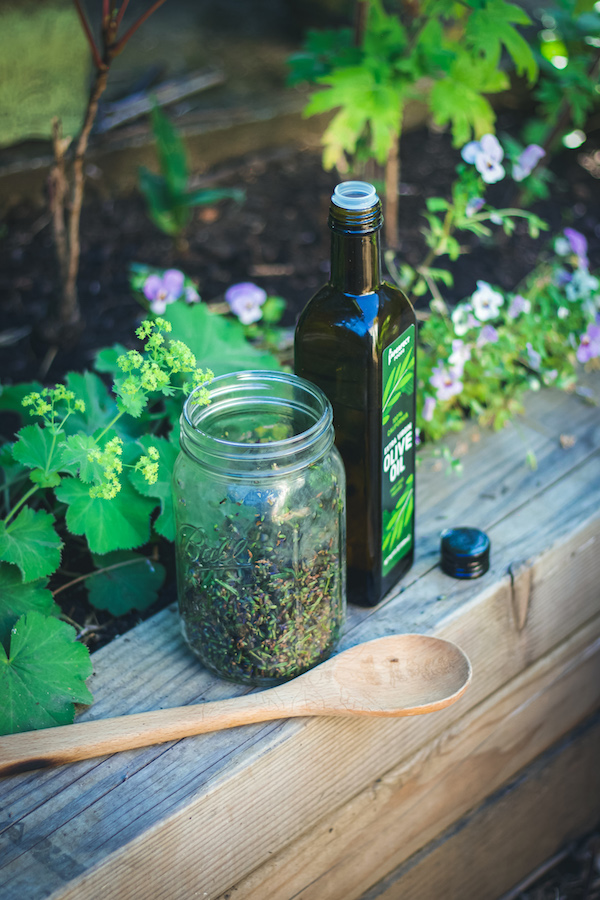



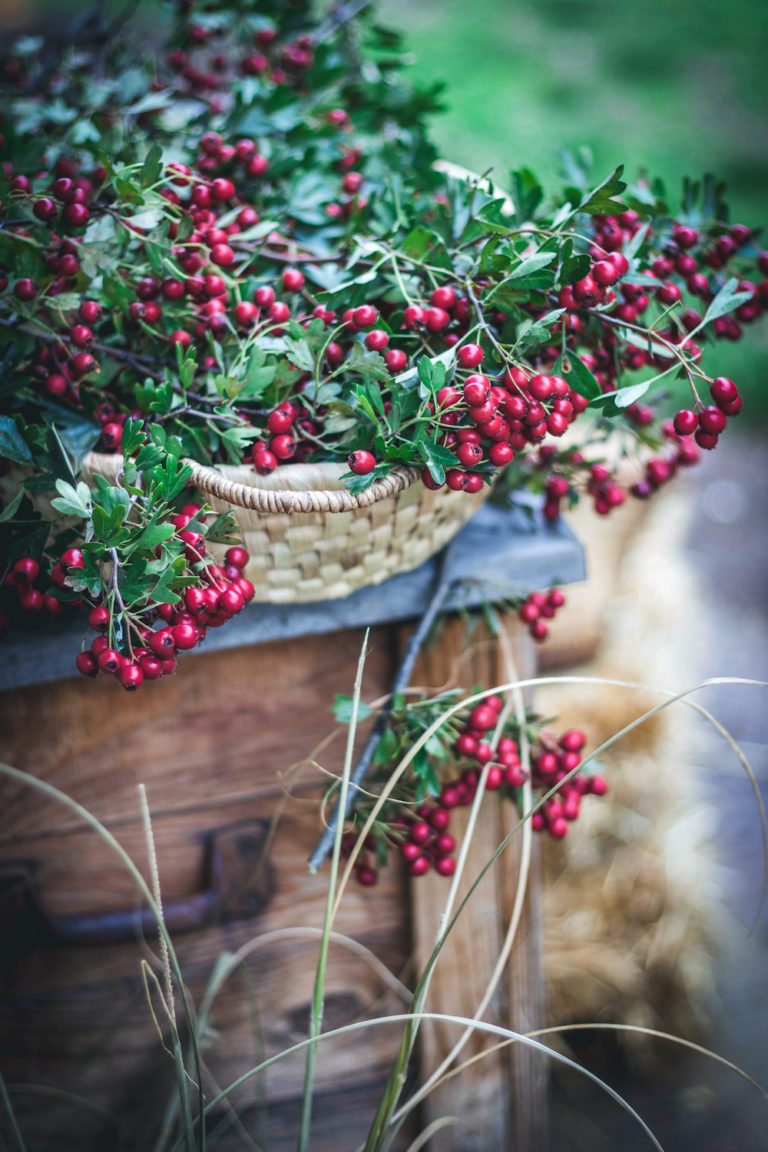
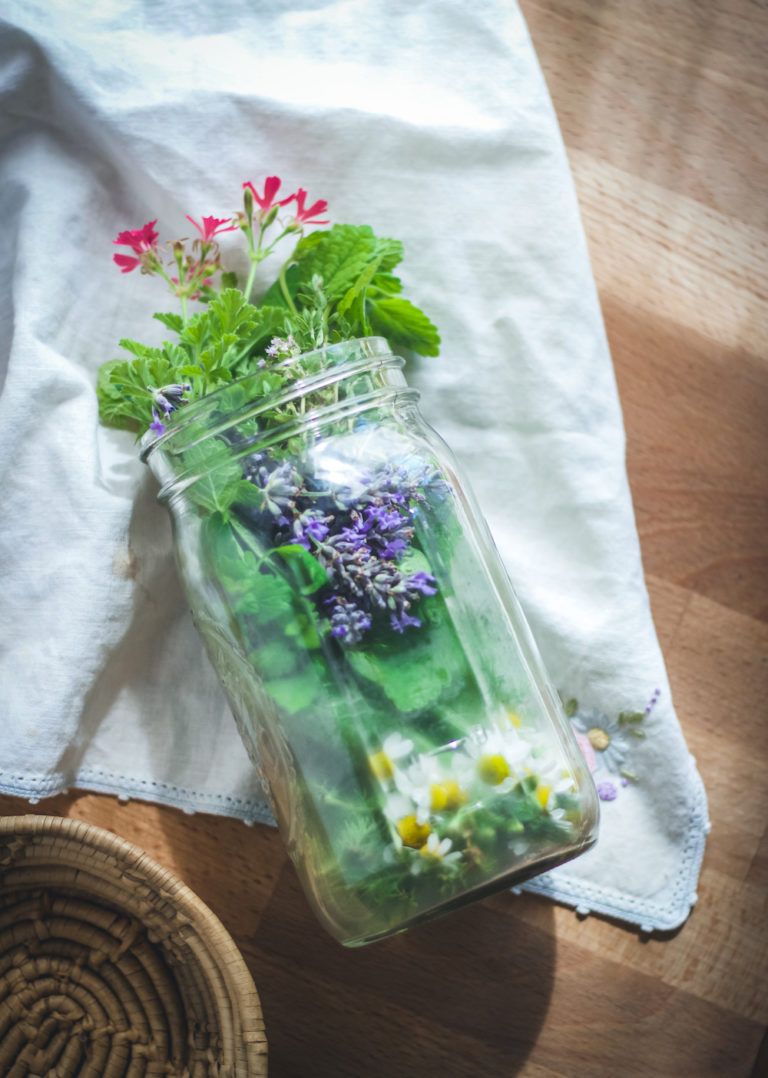

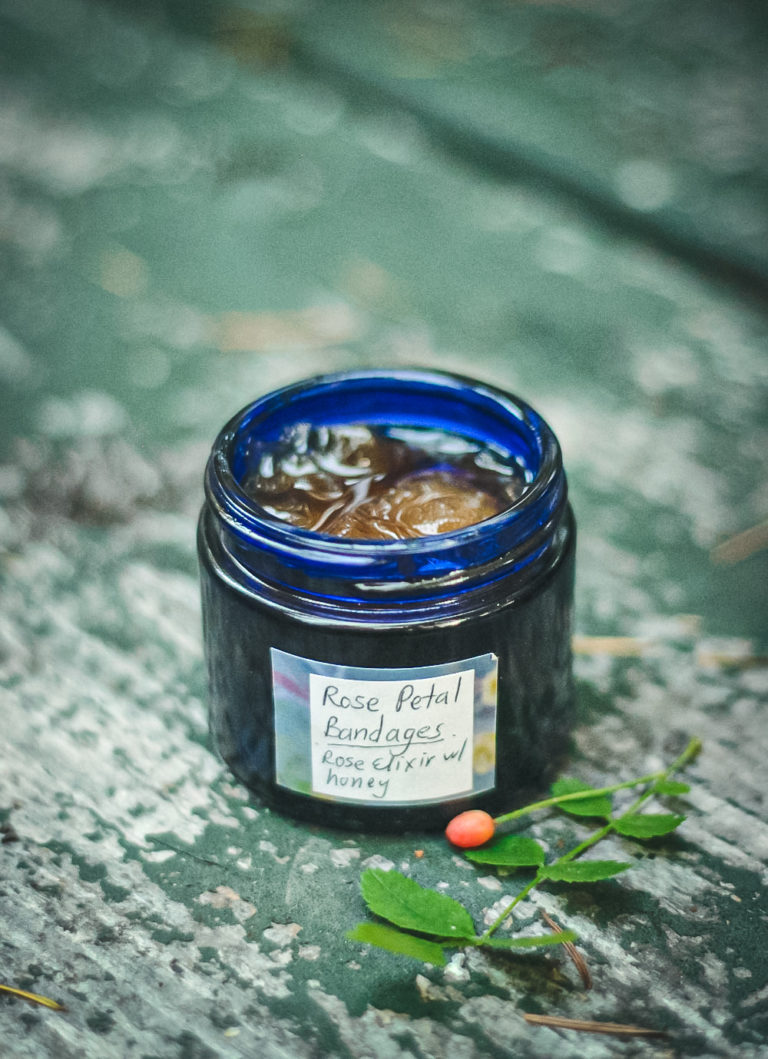
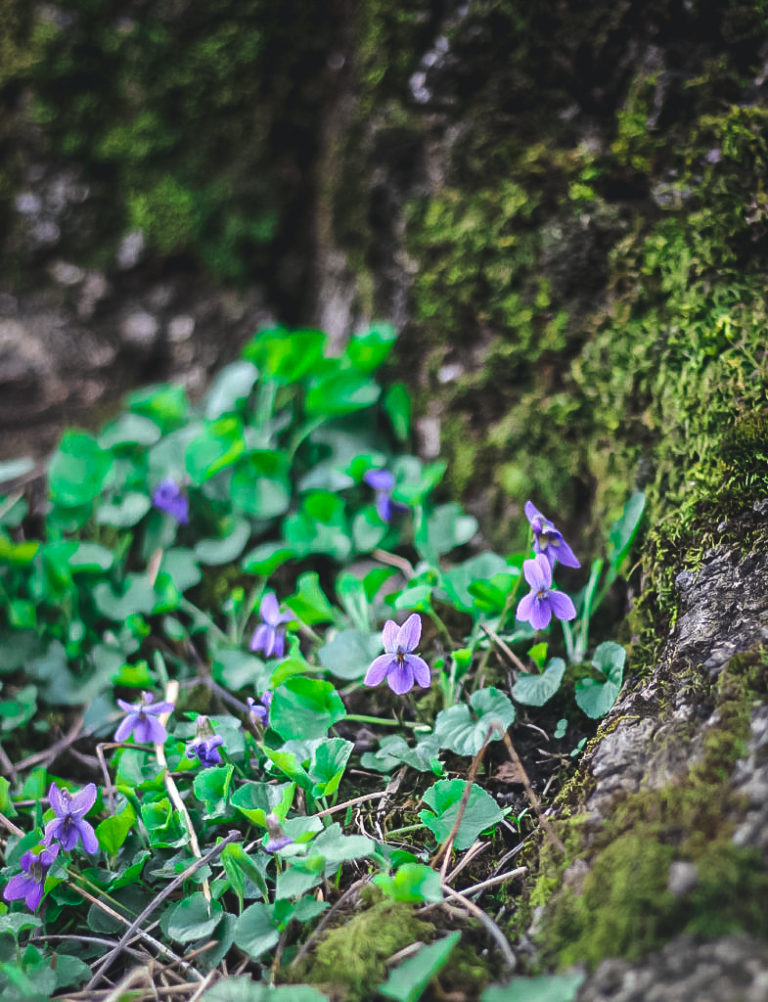
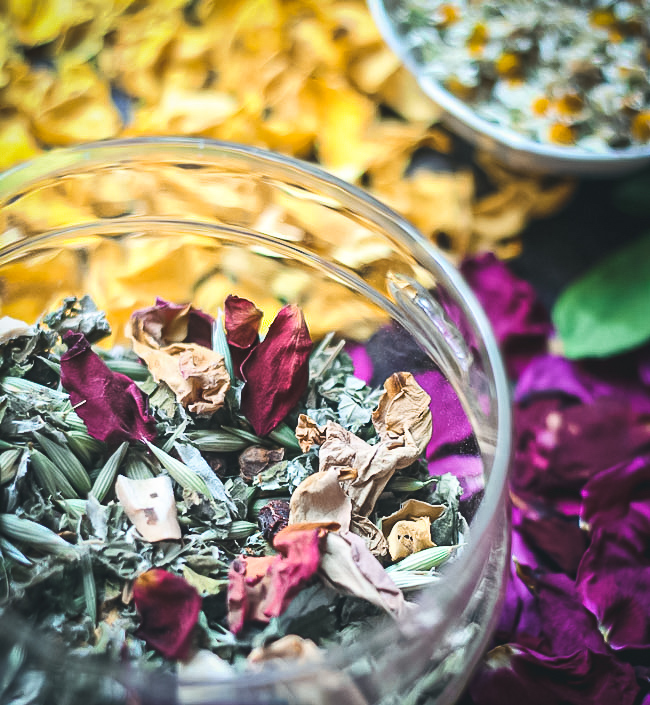
8 Comments